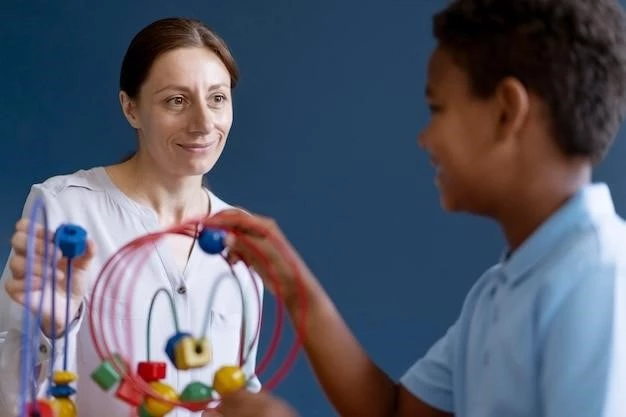Causes of Achondroplastic Dwarfism
Achondroplastic dwarfism is primarily caused by a genetic mutation in the FGFR3 gene‚
leading to abnormal bone growth. This mutation occurs spontaneously in most cases.
Genetic Mutation
The genetic mutation responsible for achondroplastic dwarfism occurs in the FGFR3 gene‚ affecting the normal formation of cartilage and resulting in stunted bone growth. This mutation is typically a spontaneous occurrence and not inherited from parents.
Impact on Bone Growth
The genetic mutation associated with achondroplastic dwarfism disrupts the normal process of bone growth‚ particularly in the long bones of the arms and legs. This leads to shortened limbs‚ a characteristic feature of individuals with this condition.
Symptoms and Diagnosis of Achondroplastic Dwarfism
Signs of achondroplastic dwarfism include short stature‚ large head size‚ and bowed legs. Diagnosis typically involves physical examination and imaging studies to assess bone structure.
Physical Characteristics
Individuals with achondroplastic dwarfism exhibit distinctive physical features such as short limbs‚ a prominent forehead‚ and a flattened nasal bridge. The condition also commonly presents with a pronounced curvature of the spine.
Diagnostic Techniques
Diagnosing achondroplastic dwarfism involves physical examination to assess characteristic features like limb proportion and head size. Imaging techniques such as X-rays and genetic testing play a crucial role in confirming the diagnosis.
Treatment Options for Achondroplastic Dwarfism
Treatment for achondroplastic dwarfism may include growth hormone therapy and surgical interventions to address complications.
Growth Hormone Therapy
Growth hormone therapy is utilized in achondroplastic dwarfism to enhance skeletal growth and overall stature. It involves regular injections of human growth hormone to promote longitudinal bone growth and improve height potential.
Surgical Interventions
Surgical interventions in achondroplastic dwarfism aim to address specific orthopedic issues such as spinal stenosis and limb alignment abnormalities. Procedures may include decompression surgery for spinal cord compression and limb-lengthening surgeries to improve overall function and mobility.
Genetic Factors in Achondroplastic Dwarfism
The genetic mutation in the FGFR3 gene plays a key role in the development of achondroplastic dwarfism.
Inheritance Patterns
Achondroplastic dwarfism is commonly caused by a spontaneous mutation‚ with a majority of cases occurring in individuals with no family history of the condition. Inheriting the mutation from a parent is rare‚ and the chances of passing it on to offspring are low.
Genetic Testing
Genetic testing can confirm the presence of the FGFR3 gene mutation associated with achondroplastic dwarfism. This testing helps in diagnosing the condition and understanding the inheritance pattern in affected individuals and families.
Achondroplastic Dwarfism in Children
Achondroplastic dwarfism presents unique challenges and considerations in pediatric patients.
Developmental Milestones
In children with achondroplastic dwarfism‚ achieving developmental milestones may be impacted due to physical limitations. Early monitoring and interventions can help support optimal growth and development.
Educational Considerations
Individualized educational plans are essential for children with achondroplastic dwarfism to accommodate physical challenges and optimize learning outcomes. Inclusive and supportive school environments play a crucial role in their academic success and overall well-being.
Challenges Faced by Individuals with Achondroplastic Dwarfism
Living with achondroplastic dwarfism comes with various physical and societal obstacles.
Physical Limitations
Individuals with achondroplastic dwarfism face challenges such as limited mobility and orthopedic issues due to their unique bone structure. Adaptations and assistive devices can help improve function and accessibility in daily activities.
Social Stigma
Individuals with achondroplastic dwarfism often face social stigma and discrimination due to misconceptions and stereotypes. Education and awareness efforts are vital in promoting inclusivity and acceptance‚ fostering a more supportive and understanding society.

Research Advances in Achondroplastic Dwarfism
Ongoing research is crucial for understanding and improving outcomes for individuals.
Clinical Trials
Clinical trials are essential in evaluating new treatments and interventions for achondroplastic dwarfism. They provide valuable insights into the effectiveness and safety of novel approaches to managing this genetic condition‚ offering hope for future advancements in care.
Emerging Treatments
Emerging treatments for achondroplastic dwarfism focus on addressing skeletal abnormalities and enhancing growth potential. These innovative approaches aim to improve quality of life and functional outcomes for individuals living with this genetic condition‚ offering promise for the future.
Support and Resources for Individuals with Achondroplastic Dwarfism
Providing comprehensive assistance and access to valuable resources is essential.
Support Groups
Support groups offer a valuable network for individuals with achondroplastic dwarfism.
Access to Adaptive Equipment
Access to specialized adaptive equipment is essential to enhance independence and quality of life for individuals with achondroplastic dwarfism. These tools help facilitate daily activities and promote mobility and comfort.
